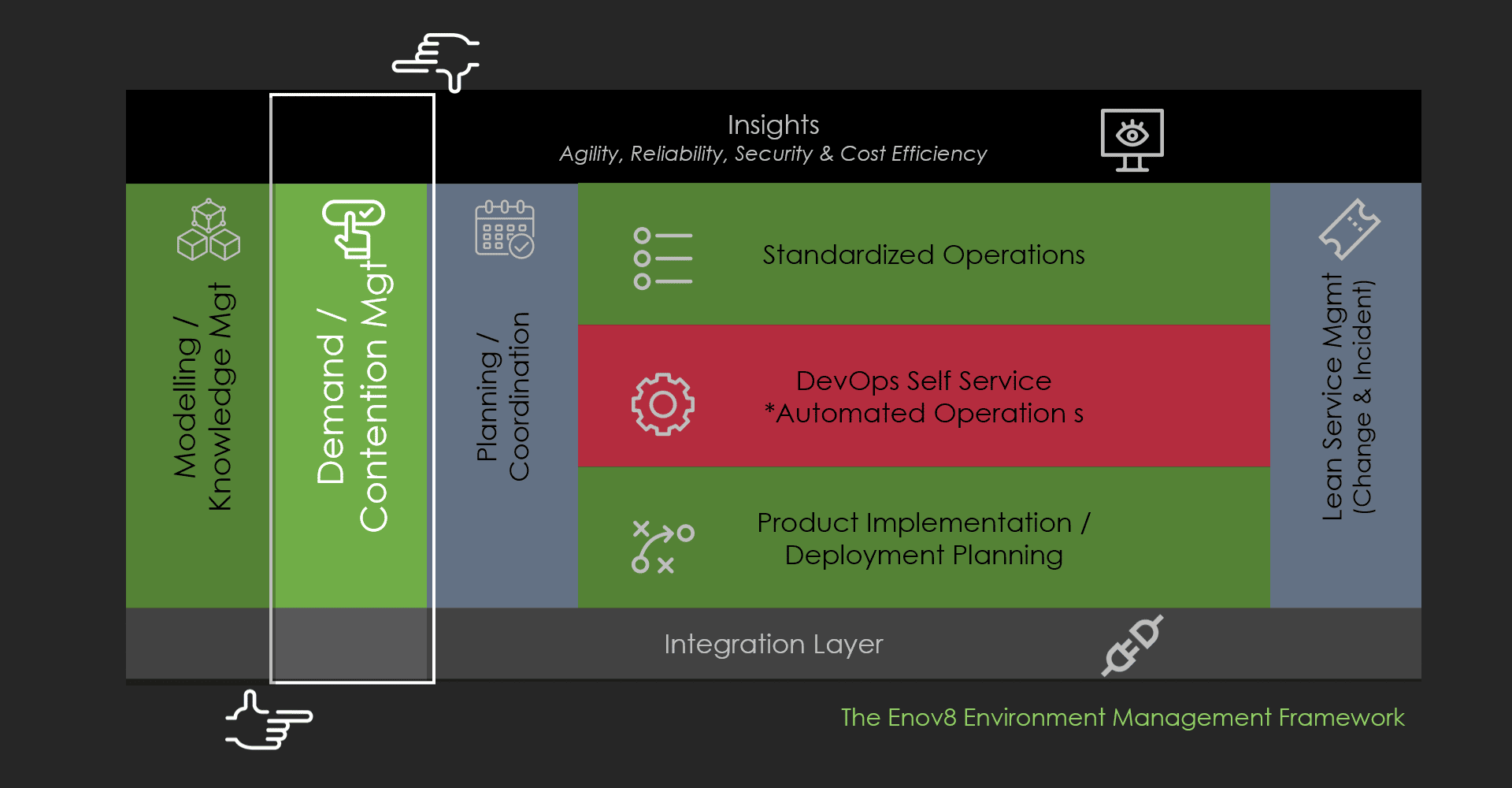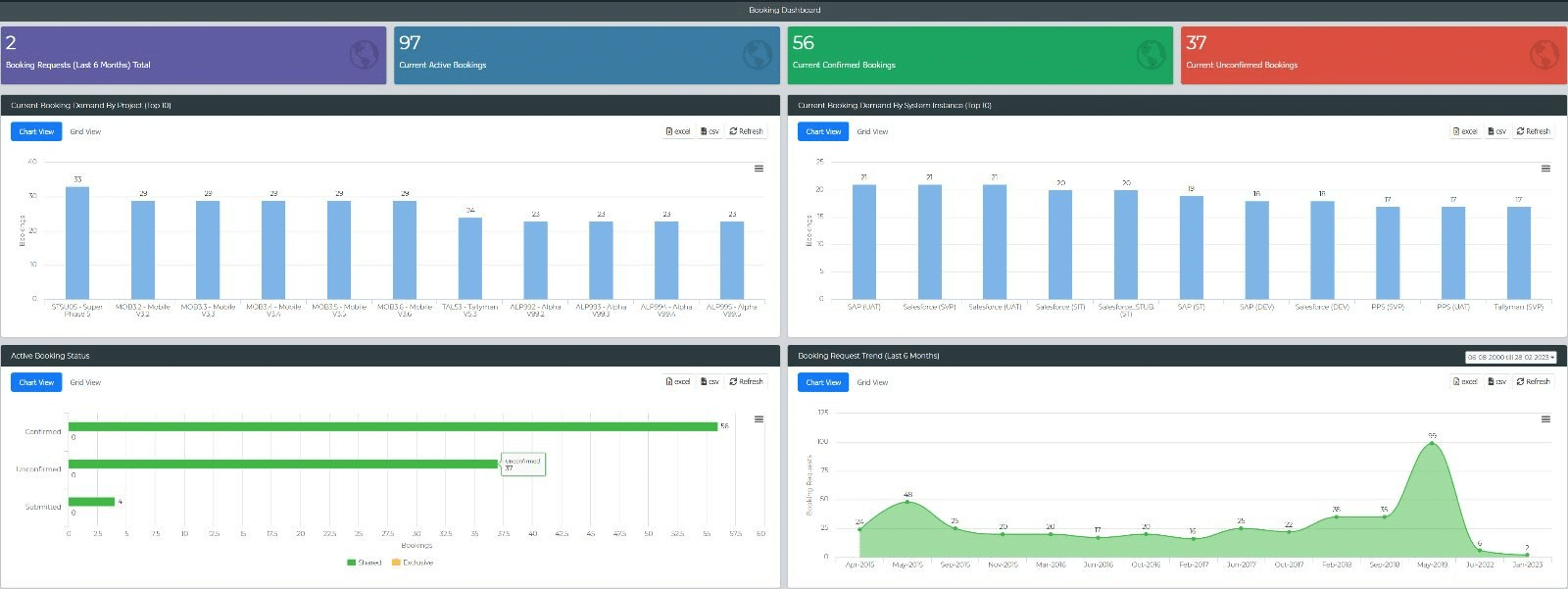
Managing Test Environment Demand & Avoiding Contention
FEB, 2023
by Jane Temov.
Jane Temov is an IT Environments Evangelist at Enov8, specializing in IT and Test Environment Management, Test Data Management, Data Security, Disaster Recovery, Release Management, Service Resilience, Configuration Management, DevOps, and Infrastructure/Cloud Migration. Jane is passionate about helping organizations optimize their IT environments for maximum efficiency.
Test environments are a crucial part of software development and testing processes. However, managing these environments can become a challenge when multiple teams are trying to access the same resources at the same time. This leads to booking conflicts and wasted time, which can negatively impact the overall development and testing process.
Enov8 IT & Test Environment Manager
*Innovate with Enov8
Streamlining delivery through effective transparency & control of your IT & Test Environments.
In this post we discuss what is Test Environment contentions, what are Test Environment Booking Best Practices and the underlying benefits of TEM Bookings.
What is Test Environment Contention
Contention in test environments refers to the competition between teams and individuals for access to shared resources. This can result in delays, reduced quality, and increased costs. Some common causes of contention in test environments include:
1. Insufficient resources: When the demand for test environments exceeds the available resources, contention can occur. This can lead to teams waiting for access to the environments they need, resulting in delays and missed deadlines.
2. Lack of visibility: Teams may not be aware of the availability of resources, or they may be unaware of the resources that are being used by other teams. This can result in conflicts and wasted resources.
3. Inconsistent policies: When different teams have different policies and procedures for accessing and using resources, contention can occur. This can result in misunderstandings and delays.
4. Uncoordinated resource usage: When teams are not communicating with each other, or when there is no central booking system, contention can occur. This can result in conflicting usage patterns and wasted resources.
Test Environment Booking Best Practice
Here are some best practices that can help you avoid test environment booking conflicts and improve the shared resource usage process:
1. Establish clear policies and procedures: Having a clear set of policies and procedures in place can help to eliminate confusion and misunderstandings when it comes to booking and using test environments. This includes guidelines for booking, usage, and maintenance.
2. Use a central booking system: Implementing a central booking system makes it easier for teams to access and book the resources they need, while avoiding overlapping reservations. This also allows for better visibility and control of resource usage.
3. Prioritize resource usage: By prioritizing resource usage, you can ensure that critical testing activities have priority over less critical tasks. This can help to minimize conflicts and improve efficiency.
4. Regularly review and adjust policies: Regularly reviewing and adjusting your policies and procedures can help to identify areas for improvement and ensure that your processes are aligned with your changing needs and requirements.
5. Implement a self-service portal: A self-service portal can allow teams to access the resources they need quickly and easily, without the need for manual approvals or requests. This can improve efficiency and reduce the risk of conflicts.
6. Automate resource management: Automating resource management processes can help to reduce the risk of human error and improve overall efficiency. This includes automating resource provisioning, decommissioning, and refresh.
Benefits of Test Environment Booking Management
Managing demand of your test environments can bring several benefits, including:
1. Increased efficiency: By managing demand, you can ensure that your test environments are used effectively and efficiently, reducing the risk of conflicts and wasted resources.
2. Improved quality: Properly managing demand can help to ensure that critical testing activities are given priority and that resources are used effectively to improve the overall quality of your software.
3. Reduced costs: By avoiding conflicts and reducing wasted resources, you can reduce costs associated with managing test environments.
4. Better resource utilization: By managing demand, you can ensure that your resources are used to their full potential, reducing the need for additional resources and improving overall utilization.
5. Better collaboration: By providing teams with access to the resources they need, when they need them, you can improve collaboration and reduce the risk of delays and missed deadlines.
6. Better visibility and control: By using a central booking system, you can have better visibility and control over resource usage, allowing you to identify areas for improvement and adjust as needed.
Simply put, managing demand of your test environments is an important aspect of software development and testing, as it can bring a range of benefits, including increased efficiency, improved quality, reduced costs, better resource utilization, better collaboration, and better visibility and control.
Conclusion
In conclusion, managing demand of test environments is an important part of software development and testing processes. By following best practices such as establishing clear policies and procedures, using a central booking system, prioritizing resource usage, regularly reviewing and adjusting policies, implementing a self-service portal, and automating resource management, you can avoid test environment booking conflicts and ensure that your shared resources are used effectively and efficiently. This can improve the overall development and testing process and help to ensure the quality of your software.
Additional Reading
Enov8 Blog: What is & why have a Test Environment Booking Form?
Relevant Articles
Enterprise Release Management: A Comprehensive Guide
Enterprise Release Management (ERM) is a set of end-to-end practices that enable large organizations to effectively manage software releases. ERM is uniquely designed for the challenges of multiple teams building and releasing software simultaneously. ERM establishes...
Your Essential Test Environment Management Checklist
“Test Environment Management Checklist.” Yep, that sounds like a mouthful, but don’t let that discourage you. The idea here is quite simple—adopting a checklist to evaluate the soundness of your test environment management approach. Even though the idea sounds simple...
A Detailed Guide to SAP Data Masking
SAP systems handle some of the most sensitive data in the enterprise: financial transactions, HR information, supplier records, customer profiles, operational details, and more. For that reason, copying production data into non-production systems without modification...
Release vs Deployment Management: What’s the Difference?
In the always-an-adventure world of IT service management, there are several key processes that are essential for delivering high-quality services to customers and end-users. Two of the most critical processes are release management and deployment management....
7 Tools to Help with Application Rationalization
Application rationalization is the process of identifying which applications an organization should keep, update, consolidate, or retire. Think of it as a financial adviser, but instead of your investment portfolio, it's your application portfolio. Most companies take...
Pairing DevOps with Test Environment Management
For many organizations, DevOps is the best practice for efficiency. However, this model doesn’t come easily as the organization needs to put certain things in place. For example, the firm needs to incorporate the right tools to ensure its delivery pipeline and...















